Tower Of The Winds And Daydreaming Of Andronicus Of Cyrrhus
A. Sutherland - AncientPages.com - Tower of Winds, located in the city of Athens, is considered to be the world’s first weather station. The building keeps some old secrets that no one has been able to solve.
A building with a sundial and a weather vane, known as the Tower of Winds, is about 14 meters (46 ft) tall, with a diameter of about 8 meters and it dates back to about 40 BC.
This enigmatic structure most probably measured time, indicated the sides of the world and the directions of the wind.
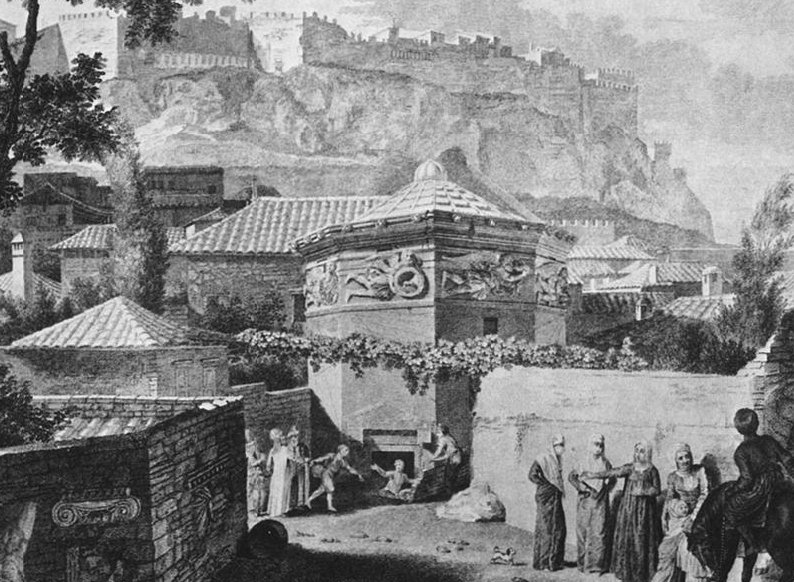 General view of the tower, from Stuart & Revett's The Antiquities of Athens, 1762. Public Domain
General view of the tower, from Stuart & Revett's The Antiquities of Athens, 1762. Public Domain
However, it is still unknown how the clock exactly functioned at night. Based on the most prevailing theory, a hydraulic mechanism powered a water clock device with water originating from a stream on the Acropolis hill.
According to ancient sources, a Macedonian architect, merchant, and sky observer, Andronicus of Cyrrhus was credited with both the design and construction of the tower.
Andronicus, who flourished ca. 100 BC, had a daydream, which later inspired his design and construction of the Tower of the Winds. In spite of the ancient beliefs of the Greeks that all dreams live under the earth, Andronicus wanted to make his dream alive on the earth. He loved stars abut he also loved winds very much.
He “was chosen by the people of Athens to plan a tower which should contain a water clock--this new tower to stand not far from the old marketplace, on the low land lying north of the Acropolis…"
"...the tower was built, with a turret on the south side to contain the cistern which supplied the water for the water clock. The movement of water wheels caused the gradual rise of a small figure which pointed a rod to the hours on a dial. The Athenians were much pleased with their new water clock, or clepsydra. Greeks of earlier centuries had had to look to the stars for their time at night…" (B. Palmer Lane, Legendary Towers)
The Tower of the Winds. image source
The marble clock tower still stands proudly at the entrance to the Roman Agora of Athens, as it did 2000 years ago.
The tower catches the eye due to its characteristic, octagonal shape and beautiful decoration in the form of intriguing bas-reliefs at the top of each wall of the tower.
The reliefs that decorate the tower are the personified images of the winds and show the main features of each of the winds and weather that they bring with them. Below the frieze depicting the eight wind deities, there are eight sundials and inside the tower, there was a water clock (or clepsydra), driven by water coming down from the Acropolis.
The Tower of Winds owes its name to the reliefs on the top of each wall, depicting eight winds: Boreas (N), Apeliotes (E), Kaikias (NE), Notus (S), Eurus (SE), Lips (SW), Zephyrus (W), and Skiron (NW).
Each wall is oriented according to the sides of the world and decorated at the top with a relief depicting one of 8 winds, below each relief there is a sundial. The conical roof was originally crowned with a bronze wind vane in the form of sea god Triton, with a sticker showing the direction of the wind. Inside the tower, there was a wooden water clock with a complex mechanism, but it did not survive to the present day, however, the remains of the fixtures are still visible in the walls.
This was a water clock combined with sundials that were positioned in the eight principal wind directions. By then, it was the most accurate device built for keeping time, and today, the tower is considered the world's first meteorological station.
Curiously, this little-known monument, which was sometimes also called Aerides (in Greek: 'winds') is regarded as one of the best-preserved monuments of the ancient city of Athens.
Written by – A. Sutherland - AncientPages.com Senior Staff Writer
Copyright © AncientPages.com All rights reserved. This material may not be published, broadcast, rewritten or redistributed in whole or part without the express written permission of AncientPages.com
More From Ancient Pages
-
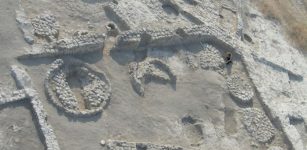 Olive Trees Were First Domesticated 7,000 Years Ago In The Jordan Valley
Archaeology | Jun 17, 2022
Olive Trees Were First Domesticated 7,000 Years Ago In The Jordan Valley
Archaeology | Jun 17, 2022 -
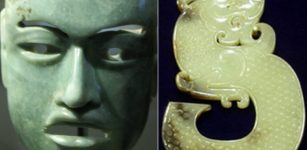 Secret Ancient Powers Of Jade: Sacred Green Healing Stone That Can Conquer Time And Guarantee Immortality
Artifacts | Oct 1, 2016
Secret Ancient Powers Of Jade: Sacred Green Healing Stone That Can Conquer Time And Guarantee Immortality
Artifacts | Oct 1, 2016 -
 A 2,700-Year-Old Urartians’ Ayanis Castle And Haldi Temple – Soon An Open-Air Museum
Archaeology | Aug 10, 2020
A 2,700-Year-Old Urartians’ Ayanis Castle And Haldi Temple – Soon An Open-Air Museum
Archaeology | Aug 10, 2020 -
 Remarkable 700-Year-Old Ship Found In Estonia Is One Of The Most Important Archaeological Discoveries In Europe – Scientists Say
News | Apr 22, 2022
Remarkable 700-Year-Old Ship Found In Estonia Is One Of The Most Important Archaeological Discoveries In Europe – Scientists Say
News | Apr 22, 2022 -
 Mystery Of The Lydenburg Heads
Artifacts | Jun 13, 2014
Mystery Of The Lydenburg Heads
Artifacts | Jun 13, 2014 -
 Newly Described Species Of Dome-Headed Dinosaur May Have Sported Bristly Headgear
News | May 24, 2023
Newly Described Species Of Dome-Headed Dinosaur May Have Sported Bristly Headgear
News | May 24, 2023 -
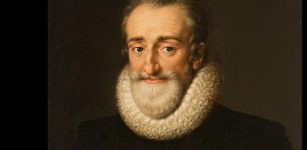 On This Day In History: Henry IV Is Crowned King Of France – On Feb 27, 1595
News | Feb 27, 2017
On This Day In History: Henry IV Is Crowned King Of France – On Feb 27, 1595
News | Feb 27, 2017 -
 Ukraine – A Place Where People From Different Cultures Intersected Until About 500 Years Ago
Archaeology | Jan 14, 2025
Ukraine – A Place Where People From Different Cultures Intersected Until About 500 Years Ago
Archaeology | Jan 14, 2025 -
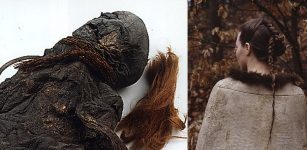 Bog Body Of The Elling Woman: Was She Sacrificed To The Gods Because Of Climate Change?
Civilizations | Mar 25, 2017
Bog Body Of The Elling Woman: Was She Sacrificed To The Gods Because Of Climate Change?
Civilizations | Mar 25, 2017 -
 Prehistoric Rock Art Discovered Near Kadiri, Andhra Pradesh, India
Archaeology | Dec 5, 2015
Prehistoric Rock Art Discovered Near Kadiri, Andhra Pradesh, India
Archaeology | Dec 5, 2015 -
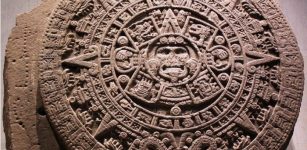 On This Day In History: Aztec Calendar Stone Rediscovered – On Dec 17, 1790
News | Dec 17, 2016
On This Day In History: Aztec Calendar Stone Rediscovered – On Dec 17, 1790
News | Dec 17, 2016 -
 On This Day In History: Statue Of Venus de Milo Is Discovered On The Aegean Island Of Milos – On Apr 8, 1820
News | Apr 8, 2016
On This Day In History: Statue Of Venus de Milo Is Discovered On The Aegean Island Of Milos – On Apr 8, 1820
News | Apr 8, 2016 -
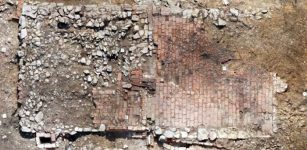 Anglo-Saxon Watermill Discovered In Buckinghamshire, UK
Archaeology | Mar 13, 2023
Anglo-Saxon Watermill Discovered In Buckinghamshire, UK
Archaeology | Mar 13, 2023 -
 The Untold Story Of Sacsayhuamán – Falcon’s Place Is Not What It Seems
Ancient Mysteries | Apr 28, 2020
The Untold Story Of Sacsayhuamán – Falcon’s Place Is Not What It Seems
Ancient Mysteries | Apr 28, 2020 -
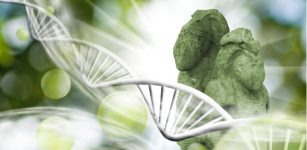 Genes For Learning And Memory Are 650 Million Years Old – Study Shows
Evolution | Jul 19, 2023
Genes For Learning And Memory Are 650 Million Years Old – Study Shows
Evolution | Jul 19, 2023 -
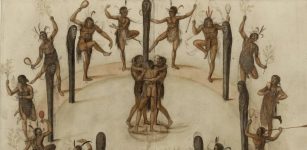 Archaeologists Have A Lot Of Dates Wrong For North American Indigenous History
Archaeology | May 4, 2020
Archaeologists Have A Lot Of Dates Wrong For North American Indigenous History
Archaeology | May 4, 2020 -
 Lemko People – European Minority That Lost Their Homeland And Still Live In Exile
Civilizations | Jan 13, 2020
Lemko People – European Minority That Lost Their Homeland And Still Live In Exile
Civilizations | Jan 13, 2020 -
 Taranis – Celtic God Of Wheel And Thunder Resembled Roman God Jupiter
Celtic Mythology | Jul 15, 2019
Taranis – Celtic God Of Wheel And Thunder Resembled Roman God Jupiter
Celtic Mythology | Jul 15, 2019 -
 Surprising Inscription Discovered On Birka Ring – Ancient Viking Artifact
Archaeology | May 13, 2015
Surprising Inscription Discovered On Birka Ring – Ancient Viking Artifact
Archaeology | May 13, 2015 -
 Was Pocahontas A Real Historical Person?
Featured Stories | Feb 20, 2019
Was Pocahontas A Real Historical Person?
Featured Stories | Feb 20, 2019

